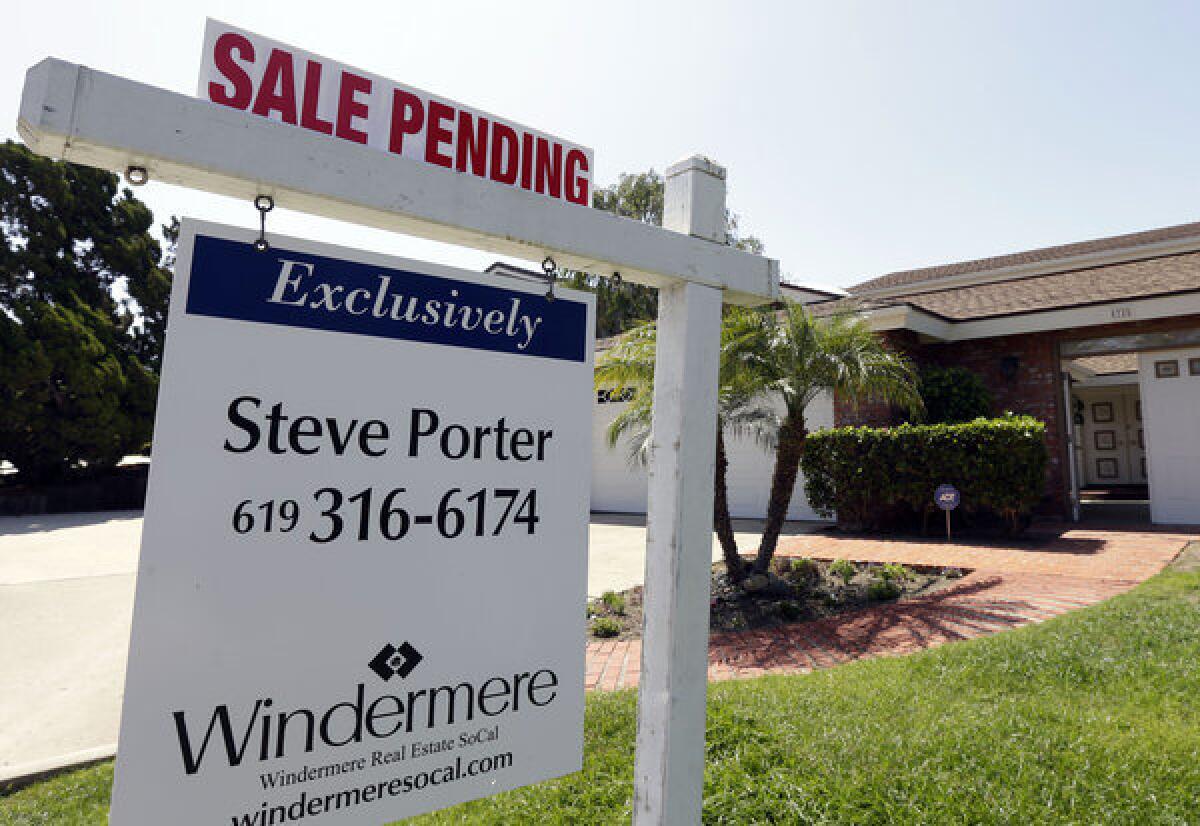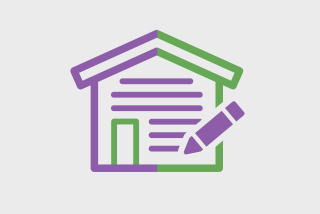Regulators weigh proposal for minimum 30% down payments on loans

- Share via
WASHINGTON — Federal agencies haven’t been functioning much this month, but six of them are looking at a proposal that could squeeze huge numbers of buyers out of the mortgage market: a mandatory 30% down payment for borrowers who seek the best rates and terms.
The regulatory agencies have set an Oct. 30 deadline for public comments on a 505-page proposal that creates new rules for bond financings of loans for homes, autos and other assets.
Among the housing proposals is something known as “QRM-Plus.” It would require 30% down or more for purchasers, tough credit standards and a ban against second liens on properties at closing.
Though the proposal was floated as an alternative to a much less onerous standard preferred by a majority of the regulators, it is being taken seriously by housing, mortgage, civil rights and consumer groups — nearly 50 of which are part of a coalition opposing its adoption.
The six agencies are the Federal Reserve, the Federal Deposit Insurance Corp., the Federal Housing Finance Agency, the Department of Housing and Urban Development, the Office of the Comptroller of the Currency and the Securities and Exchange Commission.
Two years ago, the same regulators proposed a 20% minimum down payment plan for “qualified residential mortgages,” a designation for the lowest-risk, highest-quality home loans for inclusion in mortgage bonds marketed by Wall Street. Loans that met the key criteria would be exempt from a requirement that bond issuers retain at least minimal monetary risk in the bonds they sell to investors. The 20% down idea triggered such a vehement response from the public and Capitol Hill lobbies that the agencies backed off and didn’t return with a revised plan until late this past summer.
Though the latest proposal indicates a preference by the agencies for a qualified mortgage standard with no specific down payment minimum, the mere inclusion of the 30% alternative raises the possibility that they could adopt something along these lines. Besides the 30% down payment minimum, the alternative plan would require eligible borrowers to have nearly fault-free credit histories.
Critics say imposing anything even close to these standards would force the vast majority of home buyers to pay higher rates and fees, or simply be turned down. The Mortgage Bankers Assn. of America, which strongly opposes the 30% plan, estimates that only 18% of people who purchased homes during 2012 would have been qualified for their mortgages under the alternative proposed by the regulators.
The 30% down concept would also have dramatically different effects on different racial groups. Nearly three-quarters of African American buyers put down 10% or less for their mortgage compared with 50% of all buyers, according to data from the 2009 American Housing Survey cited by the mortgage bankers group. Nearly half of Latino buyers put down less than 5%.
The plan also would strongly favor wealthier buyers over those with lower and moderate incomes, and create new hurdles for first-time purchasers, who often strain to put together even small down payments.
Sen. Johnny Isakson (R-Ga.), who is active on housing issues and was one of the legislators who crafted the risk-retention provisions in the Dodd-Frank financial reform law that authorizes qualified residential mortgages, recently called on regulators to reject the 30% alternative “because [it] would be even worse” than their original 20% plan. “It would prevent even more Americans from being homeowners,” he said.
Requiring such large upfront investments would also create severe affordability problems for buyers in higher-cost areas such as California, the Northeast and portions of the mid-Atlantic states, including the Washington, D.C., market. To finance a $500,000 house under the alternative plan floated by the regulators, you’d need to bring $150,000 cash to the table — a hefty chunk of money even in affluent communities.
David H. Stevens, president and chief executive of the Mortgage Bankers Assn. and a member of the coalition opposing the plan, said, “We plan to be very clear and very vocal” in fighting its adoption.
What are the chances you’ll be forced to pay 30% down to get a good mortgage rate thanks to the federal regulators? The politics weigh heavily against it, but then again, the same regulators who got trashed by critics when they proposed a 20% minimum are back with a 30% plan. So you can’t rule it out.
Distributed by Washington Post Writers Group.
More to Read
Sign up for Essential California
The most important California stories and recommendations in your inbox every morning.
You may occasionally receive promotional content from the Los Angeles Times.






